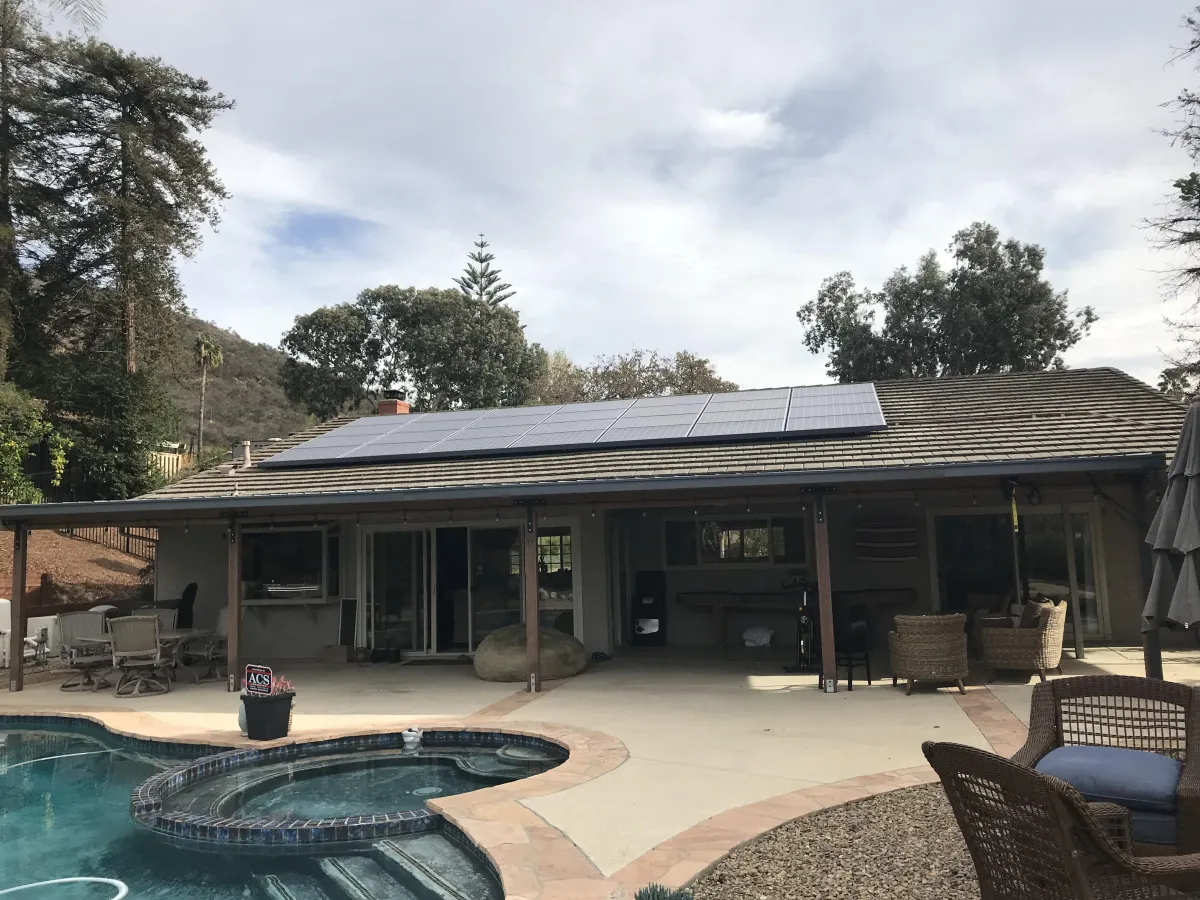Solar 101
Solar panels harness sunlight to generate electricity, working best under clear skies compared to cloudy conditions. This solar energy, in Direct Current (DC), flows to an inverter, converting it to Alternating Current (AC) for household use. Excess solar energy either returns to the power grid or gets stored at home if batteries are installed. Utilities might not credit surplus energy, so batteries could enhance benefits. Consult our experts about your utility's Net Metering Policy.

Did you know?
1. Solar Panels
Solar Panels are the key component of the solar system, typically mounted on your roof to gather sunlight every day.
2. Inverter
The Inverter transforms the solar energy harnessed by the panels into electricity for your home. It can be a Micro Inverter located beneath each panel on the roof, or a string inverter, which is a solitary device placed near your home's electrical panel.
3. Storage
Storage systems ensure homeowners can maintain power during outages. The number of batteries you own dictates the duration you can sustain without external power sources. In regions where Net Metering Policies don't compensate for the energy you supply to the grid, batteries serve as a personal grid, storing energy for later use.
4. Meter
Your meter keeps track of the energy you use. If you send energy back to the grid, your meter will reverse, giving you credit.
5. Utility Grid
Your home remains connected to the utility grid for uninterrupted power supply at night. With storage, you can use your saved energy and only rely on the grid when your production falls short.
Is My Home A Good Fit For Solar?
What are the main factors in determining whether your home would be a good fit for solar.
Here are the Top 3
How much sunlight does your home get. Are the obstructions that cause a lot of shade on your roof?
What is orientation of your roof. We prefer more Southern, Western, and or Eastern roof planes to generate the most power
You roof condition, is it in good shape, and large enough to install solar.


Direct Sunlight
Direct sunlight is essential for solar panels to function effectively. A sunny roof is perfect for solar energy. However, shaded roofs from trees or buildings may not be suitable for solar. We offer solutions for roofs that receive partial sunlight or are less exposed to light.
Discover the next level of solar performance with our advanced Micro Inverters – every panel works solo for optimal efficiency! No more stress from shaded panels decreasing your energy; each shines at its best, independent of the rest. Alternatively, pick our Power Optimizers for a dynamic duo approach: they bring together weaker panels and high performers in your solar setup. Ideal for homes facing light limitations or shading issues, both choices guarantee to boost your green energy journey!
Orientation Of Your Roof
To maximize electricity from your solar system, aim to install panels on roof areas that receive the most sunlight throughout the day. Typically, a south-facing roof is perfect, as it gets the highest sun exposure, resulting in the most power. If panels are on an east or west roof, expect a 20% drop in power compared to a south-facing setup. This may mean adding 1 or 2 extra panels, depending on how much energy you use. North-facing roofs are least ideal, with another 20% power loss from an east or west orientation, but we can still use them if necessary to meet energy goals. The direction your roof faces and the number of panels required will ultimately impact your cost savings.


Roof Conditions, Shape, and Size
Solar systems often last more than 25 years, even up to 40. Our tech, like internet and cell service, relies on space satellites using solar power. It's important your roof lasts too. If it's in poor shape, you'll face the hassle and cost of removing and reinstalling the panels for repairs. So, we ensure your roof stays in good condition during the solar panels' 25-year lifespan, boosting your savings. While roofs come in various shapes, a gable "A" frame is ideal for solar installation. We accommodate many designs, but must adhere to fire codes, which could limit solar placement on some roofs.
FOLLOW US
COMPANY
CUSTOMER CARE
LEGAL
Copyright 2025. Kerry - Powered By The Sun. All Rights Reserved.




